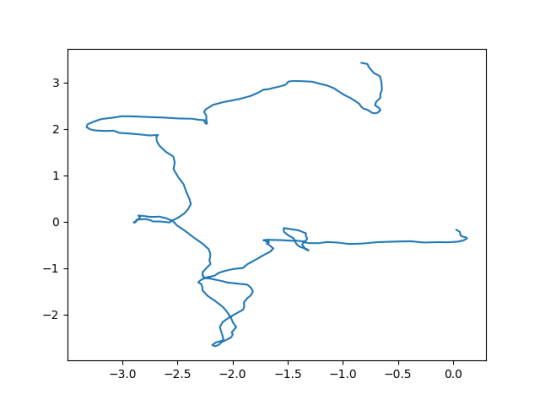2D-Random Walk
Description of the problem
Yesterday I was looking at the deficit vs exchange rate curve. The curve suspiciously looks very similar to 2D-random walk. Today, I’ll sketch several 2D-random walk curves to see if I can get curves similar to what I had yesterday.
Theory
A discrete 1D-random walk is a sequence of real numbers \((x_n)\) such that
\[ \Delta x_n = x_n - x_{n-1} \sim
N(0,\epsilon) \]
for some \(\epsilon\). In a 2D-discrete random walk we have 2 of these sequences with possibly different \(\epsilon\)’s.
Code
Let us start with the libraries
from numpy.random import normal
from pandas import DataFrame as df
import matplotlib.pyplot as pltI’ll implement the 1D-random walk. For 2D-random walk, I will call this function twice:
def randomWalk1D(n,epsilon=0.1,m=3):
x = 0
xs = []
for i in range(n):
x += normal(loc=0, scale=epsilon)
xs.append(x)
return df(xs).rolling(m).mean()Let us plot:
xs = randomWalk1D(250, 0.2, 10)
ys = randomWalk1D(250, 0.2, 10)
plt.plot(xs,ys)
plt.savefig('2d-random-walk.png')
Analysis
Well… The curve I got yesterday looks very similar to these curves. So, really if there is a functional dependence between exchange rate and the trade deficit, it is not easy to see using a simple minded plot of these values against here.